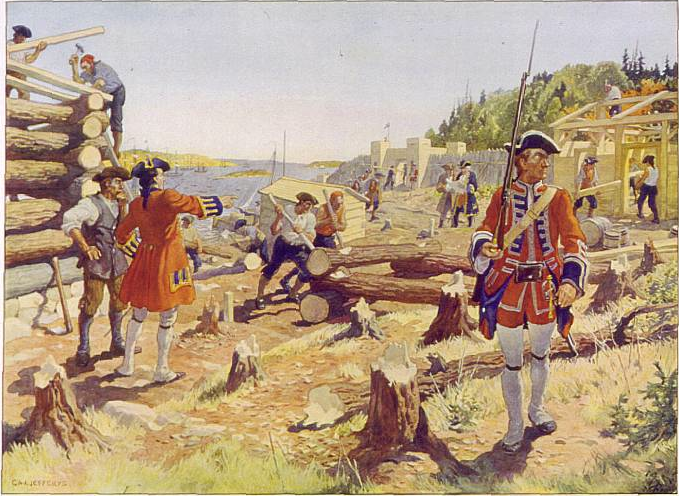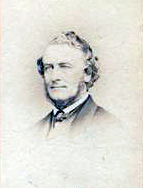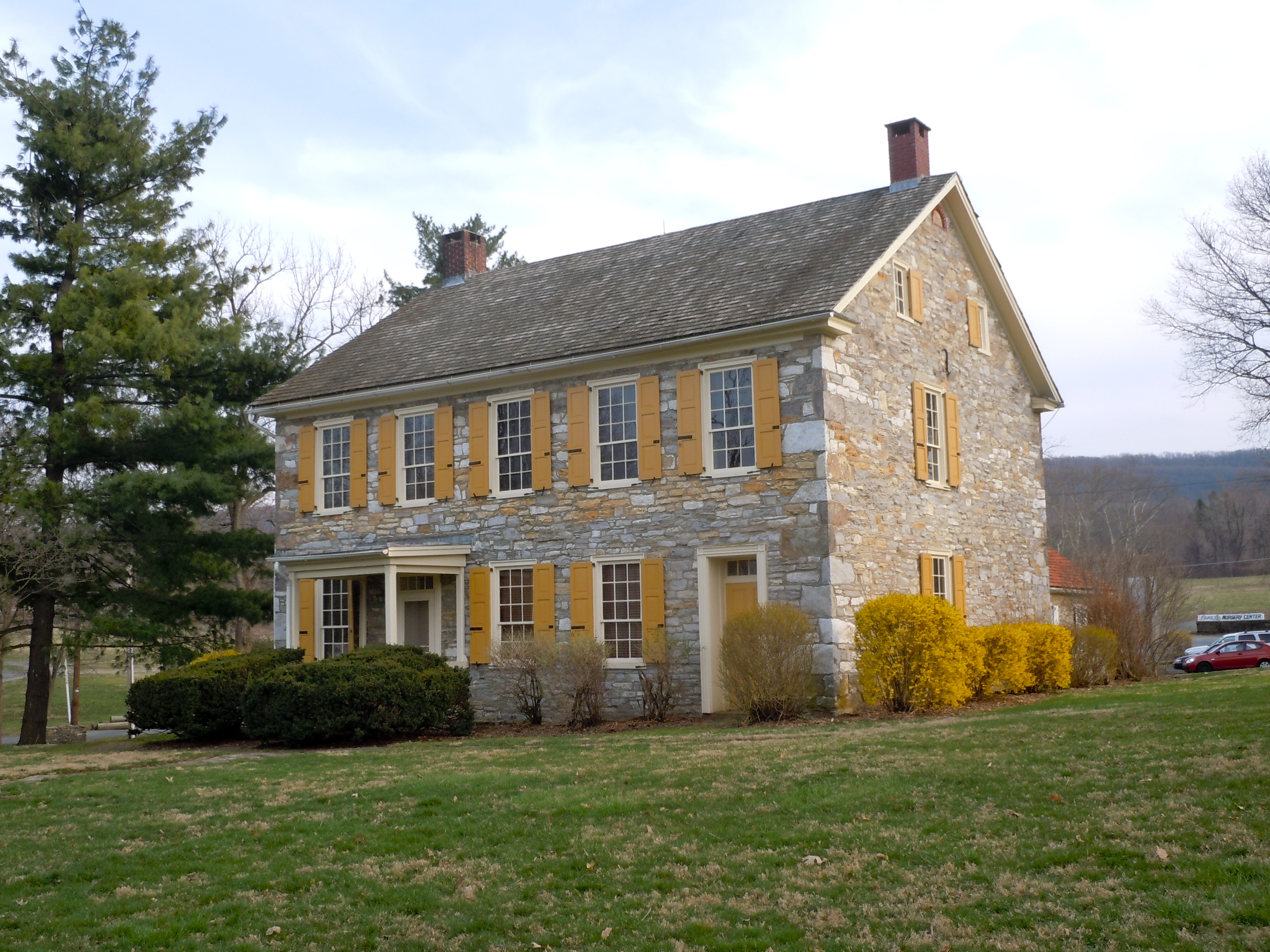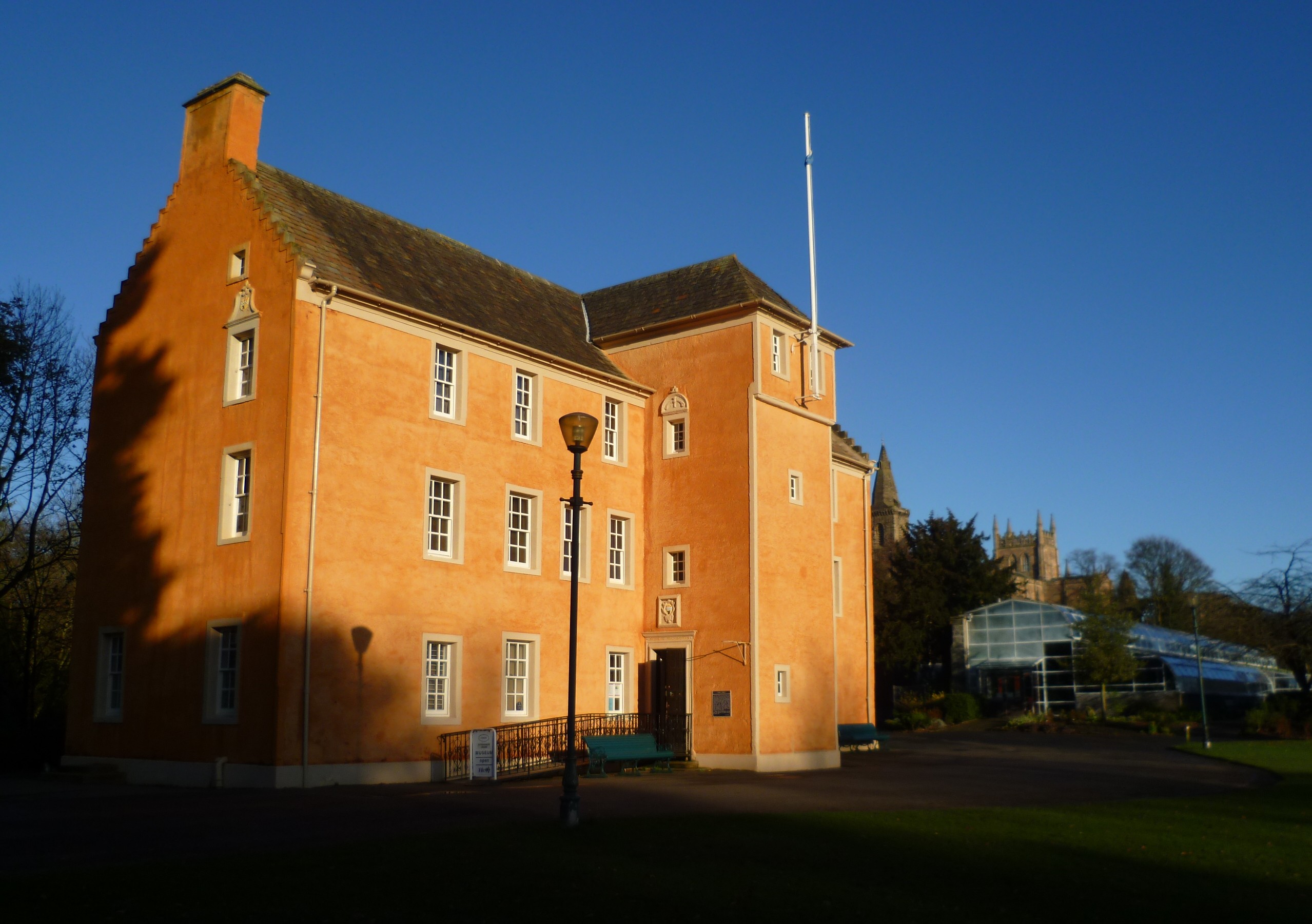|
Fort Hunter (Pennsylvania)
Fort Hunter was a military fort located in present-day Fort Hunter, Pennsylvania. It was initially a stockaded gristmill fortified by Samuel Hunter in 1755 and later enlarged and maintained by the Province of Pennsylvania during the French and Indian War. Fort Hunter was part of a defensive line of forts built in Pennsylvania during 1755 and 1756, at the start of hostilities with the French and their allied Native Americans. It was briefly used during Pontiac's War, then abandoned in 1763. History Hunter's Mill Fort Hunter was initially a stockaded gristmill in the Great Valley, owned by Samuel Hunter who lived on Fishing Creek. The mill was located about six miles north of Harris' Ferry, probably five hundred feet west of the mouth of Fishing Creek, near its confluence with the Susquehanna River, in present-day Dauphin County. In response to the Penn's Creek Massacre in October 1755, the government of the Province of Pennsylvania decided to fortify Hunter's Mill, an ... [...More Info...] [...Related Items...] OR: [Wikipedia] [Google] [Baidu] |
Dauphin County, Pennsylvania
Dauphin County (; Pennsylvania Dutch: Daffin Kaundi) is a county in the Commonwealth of Pennsylvania. As of the 2020 census, the population was 286,401. The county seat and the largest city is Harrisburg, Pennsylvania's state capital and ninth largest city. The county was created ("erected") on March 4, 1785, from part of Lancaster County and was named after Louis Joseph, Dauphin of France, the first son of King Louis XVI. Dauphin County is included in the Harrisburg–Carlisle Metropolitan Statistical Area. Located within the county is Three Mile Island Nuclear Generating Station, site of the 1979 nuclear core meltdown. The nuclear power plant closed in 2019. Geography According to the U.S. Census Bureau, the county has a total area of , of which is land and (5.9%) is water. The county is bound to its western border by the Susquehanna River (with the exception of a small peninsula next to Duncannon). The area code is 717 with an overlay of 223. Adjacent counties * ... [...More Info...] [...Related Items...] OR: [Wikipedia] [Google] [Baidu] |
William Clapham
William Clapham (1722 – 28 May, 1763) was an American military officer who participated in the construction of several forts in Pennsylvania during the French and Indian War. He was considered a competent commander in engagements with French troops and Native American warriors, but towards the end of his military career he was unpopular with troops under his command. Following his retirement from the army, he and his family were killed by Lenape warriors on his farm in 1763. Early career Nothing is known of William Clapham's early life. He was appointed captain in Boston on 1 November, 1747, and may have been born in Massachusetts. He was married to Mary Clapham. Defamation case, 1747 Court records for Suffolk County, Massachusetts, show that on 30 June, 1747, Clapham filed charges against William MacLanahan for defamation, claiming that MacLanahan :"did on ye fifteenth of June instant at Boston aforesd in ye hearing of Sundry persons willingly & malisciouly utter these ... [...More Info...] [...Related Items...] OR: [Wikipedia] [Google] [Baidu] |
Archibald McAllister
Archibald McAllister (October 12, 1813 – July 18, 1883) was a Democratic member of the U.S. House of Representatives from Pennsylvania. Early life and education Archibald McAllister (grandson of John Andre Hanna, and the paternal nephew of the George Washington McAllister, the owner of Strathy Hall) was born at Fort Hunter, Pennsylvania, near present-day Harrisburg, Pennsylvania. He attended the common schools and Dickinson College in Carlisle, Pennsylvania. He moved to Blair County, Pennsylvania, in 1842 and engaged in manufacturing charcoal iron at Springfield Furnace, Pennsylvania. Career McAllister was elected as a Democrat to the Thirty-eighth Congress. Although he was a Democrat, he supported the passage of the Thirteenth Amendment. During the congressional debate, McAllister justified his new stance because he saw destroying "the corner-stone of the Southern Confederacy" as the only path to peace. He was not a candidate for renomination in 1864. Later life and dea ... [...More Info...] [...Related Items...] OR: [Wikipedia] [Google] [Baidu] |
John Elder (pastor)
The Reverend John Elder (January 26, 1706July 17, 1792), known as the "Fighting Pastor", was the pastor for the Paxtang congregation, located in present-day Dauphin County, Pennsylvania, near Harrisburg. He founded the Paxton Boys. Biography and career Elder was born in Edinburgh, the son of Robert and Eleanor Elder. He was raised and educated there, receiving a classical education at the University of Edinburgh and then he studied divinity, receiving a licence to preach the gospel in 1732. His father had emigrated to central Pennsylvania , Elder followed . A ministry opened when the Derry congregation split in two, and Elder was called and ordained by the Paxtang congregation. The First Great Awakening had reached the area shortly afterwards. Elder opposed the revivalist furore. He was accused and formally cleared of heresy. He stood firmly with the " Old Side" in the resulting split amongst Presbyterian churches, which lasted about twenty years. The French and Indian Wa ... [...More Info...] [...Related Items...] OR: [Wikipedia] [Google] [Baidu] |
Fort Augusta
Fort Augusta was a stronghold in Northumberland County, Pennsylvania, in the upper Susquehanna Valley from the time of the French and Indian War to the close of the American Revolution. The fort was erected by Colonel William Clapham in 1756 at a site now within the limits of the city of Sunbury, n the site of the Lenape village of Shamokin, which was abandoned only a few weeks before construction of the fort began. Named for Augusta of Saxe-Gotha, the mother of King George III, Fort Augusta was the largest of the Provincial forts. It was first constructed as part of the British defense against the raids of the French and Indians from the upper Allegheny region. Later, it served as an American fortress to aid in protecting settlers of the upper Susquehanna from Britain's Indian allies to the north. During the French and Indian War in 1756, several hundred French and Indian troops traveled the Great Shamokin Path in an effort to destroy Fort Augusta, the main stronghold of the En ... [...More Info...] [...Related Items...] OR: [Wikipedia] [Google] [Baidu] |
James Hamilton (Pennsylvania Politician)
James Hamilton (1710 – 14 August 1783), son of the well-known American lawyer Andrew Hamilton, was a prominent lawyer and governmental figure in colonial Philadelphia and Pennsylvania. He served as Deputy Governor of the Province from 1748 to 1754, and again from 1759 to 1763.Armor, William C., ''Lives of the Governors of Pennsylvania, With the Incidental History of the State, from 1609 to 1872'', Philadelphia, J.K. Simon (1873) Life James Hamilton was born in Philadelphia in 1710. He was educated in Philadelphia and England before becoming a practicing lawyer in 1731. On 28 December 1733, his father resigned as prothonotary of the Supreme Court of Pennsylvania, Hamilton was appointed to the office. In May 1734 James's father Andrew Hamilton sold him the town site of Lancaster, Pennsylvania for 5 shillings. Later that month, on 21 May, the younger Hamilton secured a patent from the Penn family for his grant on the Lancaster land. After the death of his father on 4 August ... [...More Info...] [...Related Items...] OR: [Wikipedia] [Google] [Baidu] |
Treaty Of Easton
The Treaty of Easton was a colonial agreement in North America signed in October 1758 during the French and Indian War (Seven Years' War) between British colonials and the chiefs of 13 Native American nations, representing tribes of the Iroquois, Lenape (Delaware), and Shawnee. Negotiations over more than a week were concluded on October 26, 1758, at a ceremony held in Easton, Pennsylvania between the British colonial governors of the provinces of Pennsylvania and New Jersey, and representatives of 13 Indian nations, including the Iroquois, who sent chiefs of three of their nations to ensure their continued domination of their Ohio Country region; the eastern and western Lenape (Delaware), represented by two chiefs and headmen; Shawnee and others. More than 500 Native Americans attended the outdoor ceremony, after lengthy negotiations to bring peace to the regions of Pennsylvania, New Jersey and the Ohio Country. Conrad Weiser served as an interpreter and arbitrator for the ... [...More Info...] [...Related Items...] OR: [Wikipedia] [Google] [Baidu] |
Manada Gap, Pennsylvania
Manada Gap is an unincorporated community in East Hanover Township, Dauphin County, Pennsylvania, United States, located in the Harrisburg-Carlisle area, near Fort Indiantown Gap. Fort Manada Fort Manada (also known as James Brown's Fort) was a settler stockaded blockhouse established by James Brown in response to Indian attacks in the area, and then improved and commanded by Captain Frederick Smith as a sub post of Fort Swatara. It stood on what was the property of William Rhoads, east of the Manada Creek, about midway between it and the road to Jonestown and three-quarters of a mile south of the mill that once existed in Manada Gap. Captain Frederick Smith and his company were mustered into provincial service early in January 1756 and were ordered to establish a defense or occupy and improve the existing defense at Swatara and Manada. The garrison at both forts was spread between the fort and settlers' homes, protecting the dwellings and the workers in the field. James Brown w ... [...More Info...] [...Related Items...] OR: [Wikipedia] [Google] [Baidu] |
Conrad Weiser
Conrad Weiser (November 2, 1696 – July 13, 1760), born Johann Conrad Weiser, Jr., was a Pennsylvania Dutch ( German) pioneer who served as an interpreter and diplomat between the Pennsylvania Colony and Native American nations. Primarily a farmer, he also worked as a tanner, and later served as a soldier and judge. He lived part of the time for six years at Ephrata Cloister, a Protestant monastic community in Lancaster County. As an emissary in councils between Native Americans and the colonies, especially Pennsylvania, during the late 18th century's tensions of the French and Indian War (Seven Years' War), he contributed to alliances that supported the British effort. Early years Conrad Weiser was born in 1696 in the small village of Affstätt in Herrenberg, in the Duchy of Württemberg (now in Baden-Württemberg, Germany), where his father (Johann Conrad Weiser Sr.) was stationed as a member of the Württemberg Blue Dragoons. Soon after Conrad's birth, his father ... [...More Info...] [...Related Items...] OR: [Wikipedia] [Google] [Baidu] |
John Campbell, 4th Earl Of Loudoun
General John Campbell, 4th Earl of Loudoun (5 May 1705 – 27 April 1782) was a Scottish nobleman and British army officer. Early career Born in Scotland two years before the creation of the Kingdom of Great Britain, in which his father Hugh Campbell, 3rd Earl of Loudoun was a significant figure, Campbell inherited his father's estates and peerages in 1731, becoming Lord Loudoun. He raised a regiment of infantry that took part in the Jacobite Rising of 1745 on the side of the Hanoverian government. The regiment consisted of twelve companies, with Loudoun as colonel and John Campbell (later 5th Duke of Argyll) as lieutenant-colonel. The regiment served in several different parts of Scotland; three of the twelve companies, raised in the south, were captured at Prestonpans. Eight companies, under the personal command of Lord Loudoun, were stationed in Inverness. Loudoun set out in February 1746 with this portion of his regiment and several of the Independent Companies in a ... [...More Info...] [...Related Items...] OR: [Wikipedia] [Google] [Baidu] |
John Forbes (British Army Officer)
John Forbes (5 September 1707 – 11 March 1759) was a Scottish professional soldier who served in the British Army from 1729 until his death in 1759. During the 1754 to 1763 French and Indian War, he commanded the 1758 Forbes Expedition that occupied the French outpost of Fort Duquesne, now Pittsburgh, Pennsylvania. This required the construction of a military trail known as the Forbes Road, which became an important route for settlement of the Western United States. Forbes died in Philadelphia and was buried in the chancel of Christ Church, where his memorial can still be seen. Life John Forbes was born in Dunfermline on 5 September 1707, youngest child of Colonel John Forbes, 1658–1707, who died several months before his birth, and Elizabeth Graham, daughter of an Edinburgh merchant. His uncle, Duncan Forbes (1644-1704), was a prominent supporter of William of Orange and obtained his brother John an army commission. In 1701, Colonel Forbes purchased Pittencri ... [...More Info...] [...Related Items...] OR: [Wikipedia] [Google] [Baidu] |





